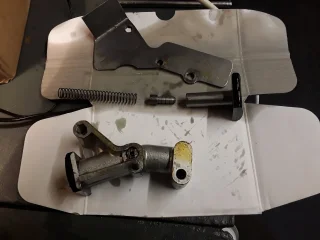- Joined
- Mar 11, 2021
- Messages
- 1,411
Thanks again. I am getting nothing out of the alternator.I suppose it can't be ruled out although my Mk3's sprag has always engaged even with a discharged or failing battery that wouldn't turn the engine over down to the point where the solenoid was chattering from the lack of voltage.
Did you do the "Testing the DC input to battery" check in the Mk3 manual, section J3 but with the Boyer Powerbox, not rectifier and Zeners?
Perhaps this recent thread at Britbike might help?
Alternator test interpretation
I'm hoping I can get some help interpreting the results of an alternator test I did getting the Trump ready for summer. The test consisted of connecting a 1-ohm 100W resistor in parallel with the alternator, measuring the voltage across it (and calculating the current through it) at 2K RPM...www.britbike.com
Ignition off battery voltage, battery tender disconnected = 13.8V
Tickover = 12.8V
2,000rpm = 12.8V
3,000rpm = 12.8V
All with lights off.
Traced the alternator wires (2 sets of green/yellow) and just before the air box bracket, there are bullet connector joints for both. One of these was showing out of the rubber sheath and loose. I've pushed them together, but battery was too flat to engage sprag to check if I'm now getting output from the alternator.
I did have a few wasted starts, but not enough to prevent the battery turning the starter over healthily. Nonetheless, the sprag did not catch. It only seems to catch when the battery is fresh off the tender. Put it on the tender again and I'll retest tonight.
A saga. Hope this is of some interest / entertaining and not just irritating everyone!


